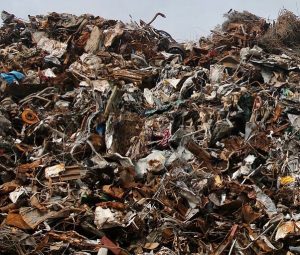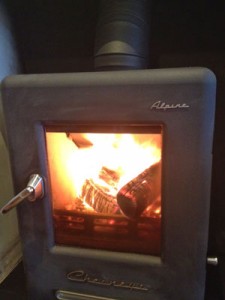‘Waste’ Materials to landfill, coffee grounds.

A recent woodlands blog discussed the millions of Christmas trees that end up as landfill material. This is also true for a material that is generated in cafes and restaurants across the U.K - the ‘waste material’ is coffee grounds. Coffee is the second largest traded commodity after petroleum. One estimate suggests that six million tonnes of spent coffee grounds go to landfill every year. Landfill sites account for a fifth of the UK’s methane emissions; methane is an extremely potent greenhouse gas associated with global warming & climate change.
Some cafes and restaurants offer their coffee grounds to customers - who want to use it in their gardens / compost heaps. However, ‘fresh grounds’ are still high in various chemicals e.g. caffeine, tannins and chlorogenic acid. This material needs to be ‘detoxified’ before it can be used in the garden - this can be done by composting the material (for approximately one hundred days).
Alternatively, this coffee waste can be used or processed to create
- high value chemicals (e.g. chlorogenic acid has been investigated for its possible anti-inflammatory / anti-oxidant effects) or
- an energy source or
- soil conditioner / fertiliser / mulch
Whilst certain recycling / processing initiatives are in their early stages, some having ‘taken off’. For example, the bio-bean initiative.  Bio-bean is in the ‘clean energy’ business. They collect waste coffee grounds and use them to create a biofuel - particularly for wood burning stoves . Each tonne of coffee waste can create 5700 kilowatt hours of energy !
Bio-bean is in the ‘clean energy’ business. They collect waste coffee grounds and use them to create a biofuel - particularly for wood burning stoves . Each tonne of coffee waste can create 5700 kilowatt hours of energy !
By processing some 50,000 tonnes of coffee waste each year, they create COFFEE LOGS. A Coffee Log is made from the grounds of circa 25 cups of coffee; a log burns hotter and longer than kiln-dried wood. According to bio-bean, this recycling of coffee waste results in 80% less emissions than landfill. Coffee Logs can be used for woodburners, stoves and open fires, The company also makes coffee-derived biomass pellets, which are designed for industrial use - and a bio-diesel.
On a more local scale, there are a number of ways of using coffee grounds in a productive way - from repelling insects to tenderising meat, visit.healthline.com/nutrition/uses-for-coffee-grounds for further details.
Thanks to Pexels on Pixabay for featured image
Comments are closed for this post.
Discussion
You could try contacting the company directly [email protected] and put these points to them.
Please show the energy inputs and outputs to make coffee logs. The grounds have to be dried to about 10% moisture and then compressed into logs which uses a lot of power. Add in fuel used to collect grounds from cafes etc and distribute logs to retailers. Assume electricity used comes from wind or solar.
So, how many Joules are used to make 1kg coffee logs and how much heat is produced per kg compared to say coal and cured hardwood. Add to coal and wood values energy used to mine coal and fell trees, process then and get it to retailers. Also compare this with the CO2 emissions when putting grounds directly on flower beds or composting them. And finally, express these processes as a CO2 balance sheet. And don’t forget methane emissions!!
When I see the figures I’ll have more faith in the claims about the CO2 emissions reduced by burning coffee logs and may be buy some coffee logs.
In the meantime I shall continue put our coffee grounds in a watering can and spread the slurry on our flower beds to ward off cats!!
If I were decades younger and looking for a Masters thesis topic, I’d choose the topic outlined above.
FYI. I buy all my coffee pods from Nespresso who have their own recycling system. When you purchase pods you get a returns bag which is used to collect all he used pods. These can be taken to a local collection point, in my case 300 yards away to a convenience & are returned to Nespresso.

This may interest
https://thefishsite.com/articles/coffee-can-fuel-more-than-just-your-morning-routine-microalgae-biodiesel
E.L.Wisty
4 November, 2022